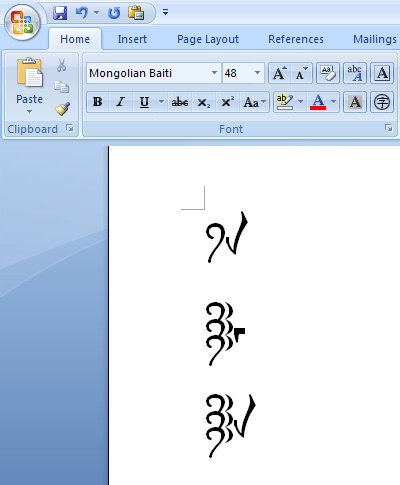Microsoft Word Unicode Converter Mongolian

Testimonials what our customers say about our products and services. Books, the latest book by Philip Payne. Signed copy only $19.99plus shipping. Also see by Payne, available for.
Unicode Converter software free downloads and reviews at WinSite. ASCII to Unicode Converter v.0.3.2Mongolian ASCII to Unicode Converter 0.3.2 is. In the market which can Convert Kruti Text into Mangal font directly in MS Word Files.
Is the only color facsimile of the oldest surviving manuscript of virtually the entire Bible in Greek. It was written about A.D. 350 and is regarded as the most important manuscript of the Greek Bible. The photographic quality and color reproduction is amazingly faithful to the original. Most of the 450 numbered copies printed for sale have already been sold, so availability is limited. The $5580 price includes express shipping and insurance., The remarkably clear color facsimile of the fourth-century Codex Sinaiticus of all the NT and half of the LXX plus Tobit, Judith, 1 and 4 Maccabees, Wisdom, Sirach, Barnabas, and the Shepherd is available for a limited time for $699.95,. We believe this is by far the best price available anywhere.
Crack carte sd navteq update windows 10. The list price is $999. Shipping the 32 lb box by UPS ground is $59 within the USA 48 states.
Shipping to the UK is $149 and $129 to most other western European countries, Hong Kong, Japan, and Korea are $149. Egypt, Israel, India, and Singapore are $169. 828 pages 13.5 x 16.5 in., cloth with slipcase. ISBN: 775, probably the most important book on Codex Vaticanus ever written, with PB Payne's historic chapter on Distigmai. Only $49.95 plus shipping. 'Thank you very much for your kind response to my request and a much earlier reply than I even dared to hope for.
You really shocked me by it. I can see you working overtime, but do you ever sleep? It shows how much you love what you are doing and how very fond and rightfully proud you are of what you created in the Linguist’s Software. Cannot say anything more than 'Bravo'. Once again with appreciation and best wishes.'

Frankel, Brock University, Canada 'I must say that your installations and explanations are getting much more user friendly. If a person wants a lot of detail, you've got it, but if not, like me, then you offer a pretty streamlined procedure with lots of pretty pictures.'
Andrew David Kaufman, University of Virginia, Charlottesville, VA 'I am extremely satisfied with your Unicode-encoded Cyrillic fonts (TransCyrillic in Unicode for Windows), not only because they enable me to work out and exchange by e-mail Word files with all my partners (in Russia and elsewhere), but also because the TransCyrillicLS keyboard layout, which I can apply without any difficulty to my AZERTY keyboard, is the most user-friendly one I have ever used. Again, thank you for your excellent guidance!' Jean-Paul LACORE, Paris, France.
Convert a Devanagari font to Unicode / OTL • • 5 minutes to read • Contributors • In this article Whichever way you look at it, having only Mangal is hardly sufficient for all text processing purposes and for all the languages that use the script. We would like to see many more Unicode Devanagari fonts appear, and hope that appropriate standards will emerge along the way.
So, suppose you have a font that was used to print Devanagari in some proprietary encoding. What does it take to convert it to Unicode? Where do I start? There are several steps involved. This posting will briefly outline them.
For more details one would refer to the, the and the. Different approaches are of course possible so please take my writings with a grain of salt. They only reflect one person's limited experience. Glyph set • Examine your font and make sure it covers the Unicode range for Devanagari. There should be at least one glyph for each code point in the Devanagari range. If, for example, your encoding assumed that DEVANAGARI LETTER O is coded as DEVANAGARI LETTER A plus DEVANAGARI VOWEL SIGN O, you would probably need to create a new glyph for DEVANAGARI LETTER O.
As a result of this step, you may be creating several new glyphs that are, in fact, composites of already existing shapes (so you don't really need to design new shapes for them). You may end up creating composite glyphs from already existing shapes for the steps below as well. In fact, creating composites in your font as an alternative to complex OTL processing may significantly decrease complexity of your VOLT tables. Which is a good thing.
So whenever you face an alternative of introducing a new complex (e.g. Context-based) lookup or a dozen new composite glyphs in the font, I suggest you always choose the latter. (Of course if you need to create several hundred new glyphs, it's different) • Make sure your font has all forms prescribed by the Creating and supporting OpenType fonts for Devanagari specification. (this list is most probably incomplete): • you should have glyphs for half forms for all consonants (for those that do not have a distinctive half form, e.g.